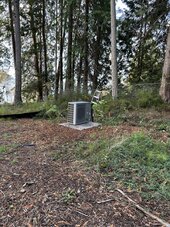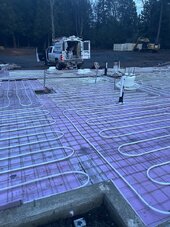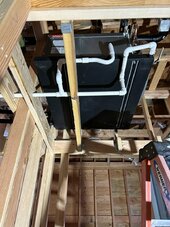mapsofilti
New Member
I am looking to engineer a system that maintains and stores 1,000 L of a glycol/water mixture at -50 C during the day. My calculations are that it is more economic to store a large volume of cold liquid rather than buying the batteries to compress on demand in the night time. I also have an opportunity to incorporate additional geothermal cooling (e.g. a first pass through the ground on the return from the zones back to the coolant resevoir) if that's economic.
It will either be circulated through radiant floor cooling within the building or used with heat exchangers to blow cold air in each room.
Can you guys give me input and point me in the right directions? What are some good value compressors I can use to cool the liquid and some energy efficient pumps for the night time? My plan is to have three phase available as well. How should I regulate the temperature? I was thinking of using an Arduino to activate the pumps in bursts or a controlled VFD to slow down the flow of the coolant in each zone as needed.
This is in a country in South America where the sun is always plentiful and the temperature 95% of days will be 100+ F. I am going to have a series of windmills and the cooling system won't have as much demand for the other 5% of days.
It will either be circulated through radiant floor cooling within the building or used with heat exchangers to blow cold air in each room.
Can you guys give me input and point me in the right directions? What are some good value compressors I can use to cool the liquid and some energy efficient pumps for the night time? My plan is to have three phase available as well. How should I regulate the temperature? I was thinking of using an Arduino to activate the pumps in bursts or a controlled VFD to slow down the flow of the coolant in each zone as needed.
This is in a country in South America where the sun is always plentiful and the temperature 95% of days will be 100+ F. I am going to have a series of windmills and the cooling system won't have as much demand for the other 5% of days.






